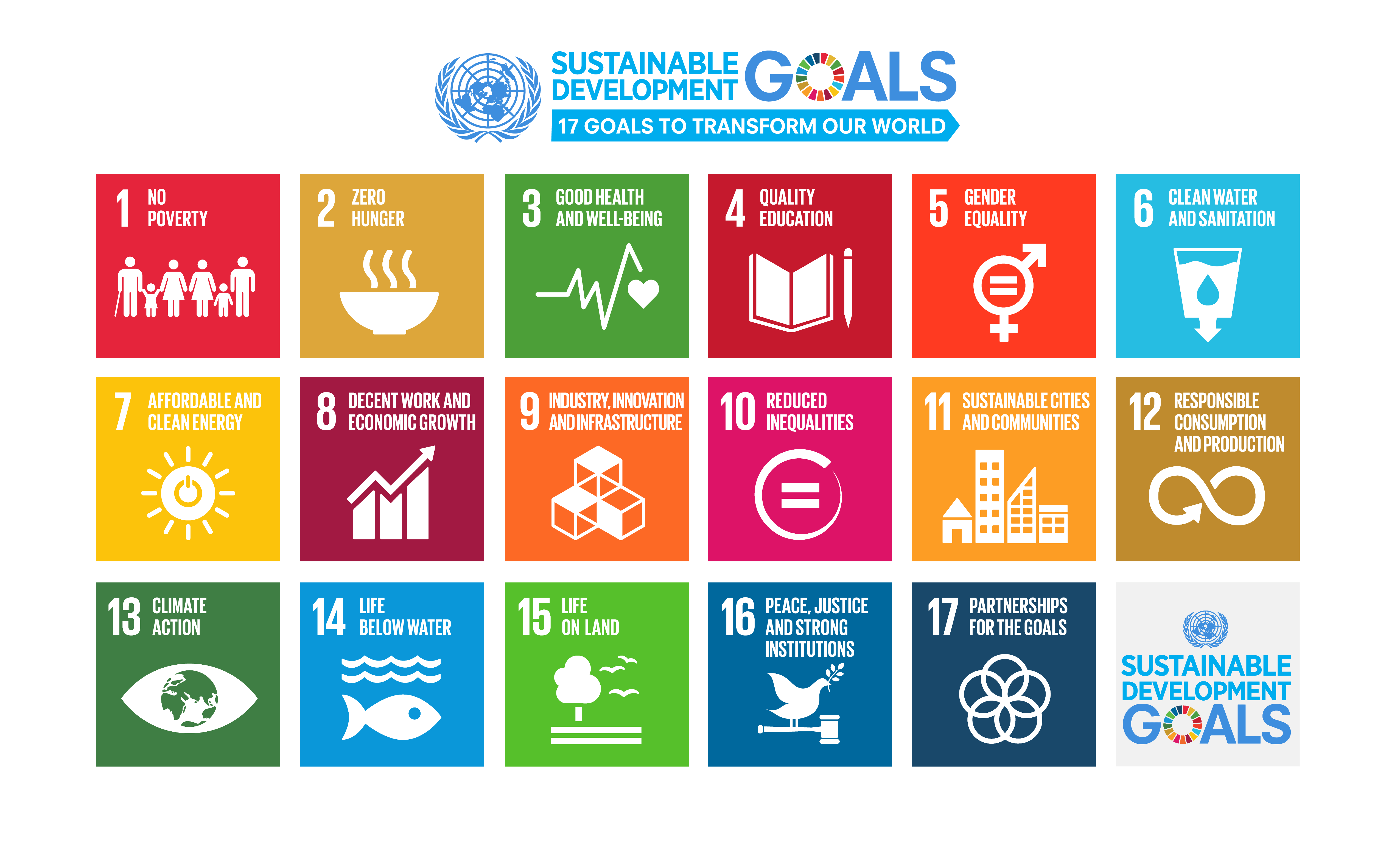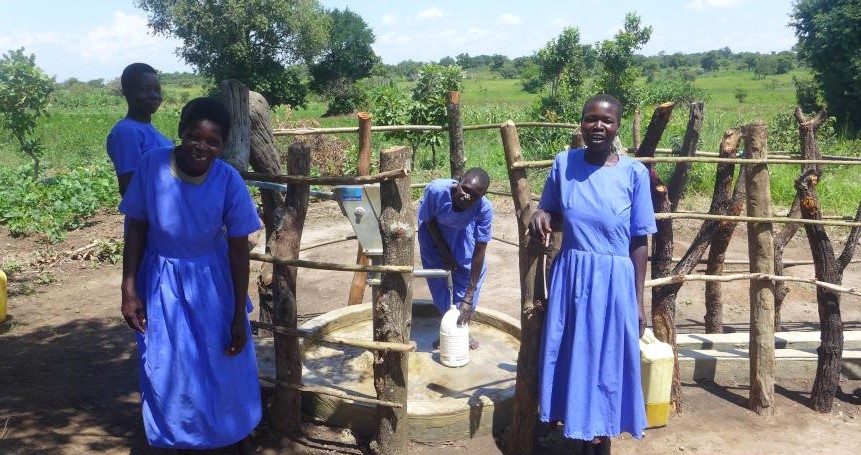.png)
Image: The Gold Standard Project "Sichuan Rural Poor-Household Biogas PoA" installs biogas digesters and smoke-free cookstoves to low-income households, and claims impacts across multiple SDGs.
Image Source: Gold Standard
This is the second post in our series, Thinking Beyond Carbon, where we educate carbon credit buyers on Sustainable Development Goals and Environmental and Social Safeguards.
What are Sustainable Development Goals?
In September 2015, the United Nations came together and adopted 17 Sustainable Development Goals (SDGs), marking a pivotal moment in global cooperation. These goals were crafted with a singular mission in mind: achieving a better and more sustainable future for all. Each of these SDGs represents a specific thematic area or challenge, all to be addressed by the year 2030. Collectively, they encompass a total of 169 associated targets, providing a roadmap for achieving these goals.
The SDGs are a response to global-level challenges and are applied universally to all countries. Their creation was the result of a collaborative effort involving governments, civil society, academia, and the private sector. Born out of a previous set of UN goals that ended in 2015, called Millennium Development Goals (MDGs), the 2015 Sustainable Development Goals expanded upon the MDGs in both scope and stakeholders. Importantly, the new goals saw the private sector as a key contributor to progress. Many companies have signaled intentions to make progress on some of these goals as part of their own sustainability strategy. The 17 Sustainable Development Goals include:

The carbon market’s ability to make progress on Sustainable Development Goals
Carbon projects were not always viewed as a key opportunity for advancing SDGs. But, as the recognition of interdependence between global sustainability and climate change mitigation efforts has increased, so has the role of carbon credits. Article 6.4 of the Paris Agreement sets the foundation for a new market-based mechanism under the Paris Agreement, referred to as the Sustainable Development Mechanism (SDM).
The SDM builds on and replaces the Clean Development Mechanism (CDM) under the Kyoto Protocol. Its primary purpose is to create a new market-based mechanism for achieving climate goals while promoting sustainable development, particularly in developing countries.
It has become increasingly evident that carbon projects have significant synergies with various SDGs. Often, these projects are able to make progress on multiple fronts simultaneously. For instance, cookstove projects often contribute to SDG 3 (Good Health and Well-being), SDG 7 (Affordable and Clean Energy), and SDG 13 (Climate Action). Similarly, REDD projects contribute to SDG 1 (No Poverty), while also supporting SDG 2 (Zero Hunger), SDG 4(Quality Education), SDG 8 (Job Provision), and SDG 15 (Life on Land).
Role of the private sector in advancing progress on Sustainable Development Goals
The private sector plays a critical role in advancing the Sustainable Development Goals. Their role is instrumental as they bring vital resources, foster innovation, share their expertise, and employ technology to address global challenges. The voluntary carbon market is one powerful arena where the private sector can make significant contributions to SDGs. This is achieved through support for sustainable and climate-friendly projects, advocating for responsible business practices, nurturing innovation, and forging partnerships that drive progress toward a more sustainable and equitable world.
For example, through the carbon market, companies and organizations drive economic growth and job creation (SDG 8), can play a role in promoting responsible consumption and production (SDG 12), invest in infrastructure (SDG 9), and enhance access to essential services (SDG 7 and SDG 6). Carbon projects that deliver co-benefits to local communities represent more than just initiatives to reduce greenhouse gas emissions; they serve as vehicles for positive, enduring transformation. As companies engage in these initiatives, they gain not only resource and economic benefits, but reputational and brand benefits when they share their impact stories.

The Lango Safe Water Project claims to produce impact on SDG 1 (No Poverty), SDG 5 (Gender Equality), SDG 6 (Clean Water) and SDG 13 (Climate Action).
Image source: Gold Standard
Role of Sustainable Development Goals in carbon projects
When designing a carbon project, project developers have a valuable opportunity to make an impact towards sustainable development. The SDGs can become a guide in designing interventions that support a wide range of objectives, from environmental sustainability and climate action to poverty reduction, job creation, and economic growth. A project developer can also pursue certification of that SDG impact through certification bodies such as Verra’s Climate, Community & Biodiversity (CCB) Standards and Sustainable Development Verified Impact Standard (SD VISta) or Gold Standard for the Global Goals.
Using SDGs as a means for structuring the implementation of benefits ‘beyond carbon’ provides a universally accepted framework for reporting both societal and environmental contributions. This approach provides carbon credit buyers and carbon credit rating agencies, such as Calyx Global, the evidence to understand and assess the project’s impact on a consistent and comparable basis.
How different types of carbon credits contribute to Sustainable Development Goals
Contributions to SDGs can vary based on the type, objectives, design, and location of a carbon project. As a result, not all projects have the same potential for benefits. So what kind of projects deliver what kind of benefits?
There are project types, such as Ozone Depleting Substances (ODS), whose benefits beyond reducing emissions are not that evident/straightforward. Nevertheless, environmental and social benefits are achieved. For example, these projects accelerate ozone layer recovery and can contribute to reducing harmful effects of ODS on human health (SDG 3) or contribute to more sustainable industry practices (SDG 12). Agriculture, Forestry, and Other Land Use, as well as Cookstoves, whose GHG removal/reduction success depends to a greater extent on the effective interaction and coexistence with communities and the environment, naturally has an impact (both positive and negative) on multiple Sustainable Development Goals. There are also other types of carbon projects that typically contribute little to nothing to SDGs, such as Industrial Emissions Reduction Projects (i.e., hydrofluorocarbon-23 reduction projects), but if designed appropriately, have potential for SDG impact.
When it comes to carbon credits’ impact beyond carbon, most people immediately think of biodiversity and ecosystems, particularly with forestry and other land use projects. But the reality is that we can make progress on many more Sustainable Development Goals through various carbon project types. Sustainable consumption and production, access to clean water and sanitation, promoting sustainable transportation, and green building are just some of the other goals carbon credits have the potential to support.
Sustainable Development Goals have the power to bring about tangible, ongoing improvements in the lives of people across the globe when we use the power of the carbon market to further SDGs, it only amplifies our impact. At Calyx Global we aim to arm carbon credit buyers with the information they need to maximize their impact with lower risk for both people and the planet. This education series will continue with more insights into environmental and social safeguards. To receive upcoming posts in the series when they are live, sign up for our newsletter below or follow us on LinkedIn.
To learn more about our approach to Sustainable Development Goal ratings, read our SDG ratings explained paper.Get the latest delivered to your inbox
Sign up to our newsletter for the Calyx News and Insights updates.
